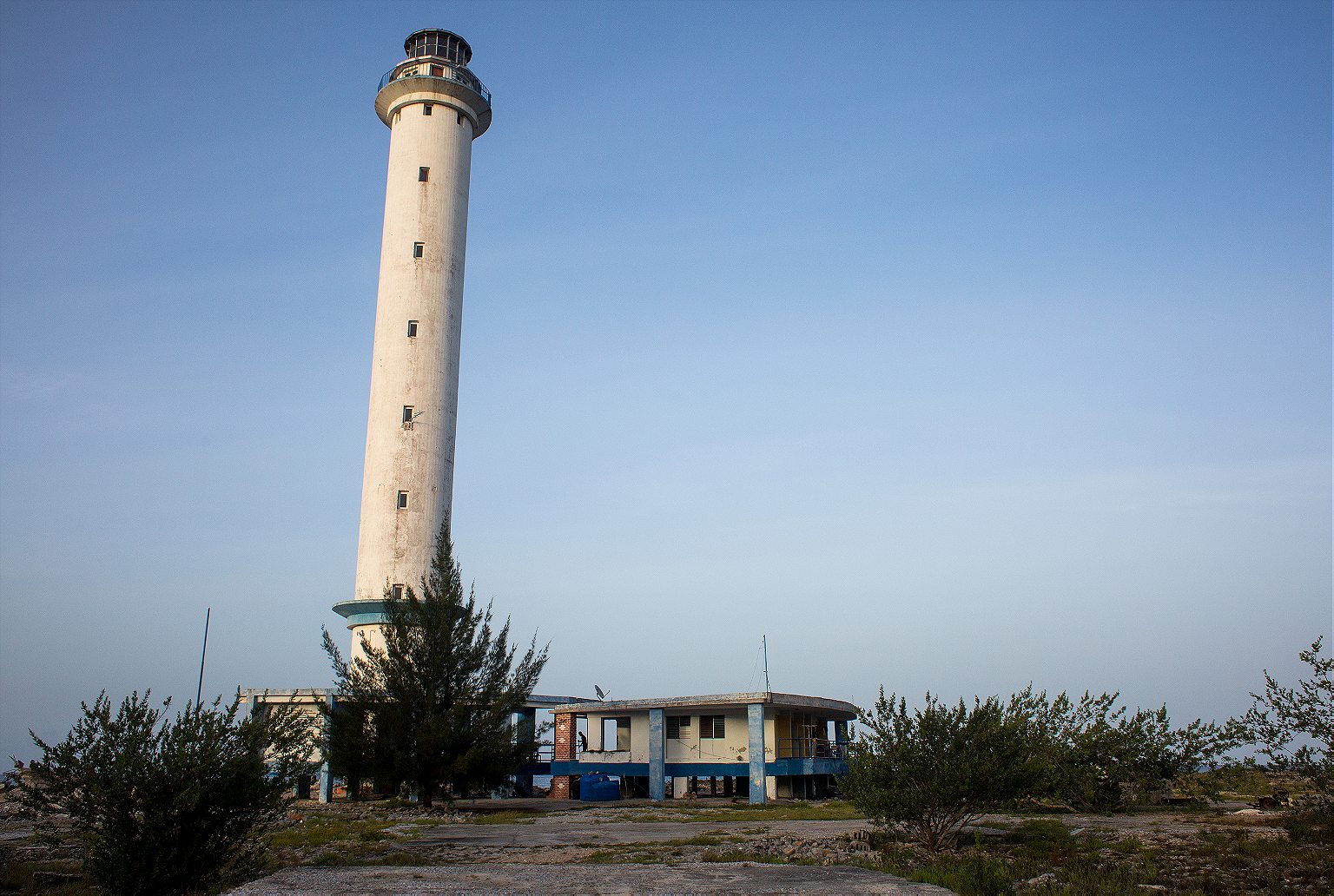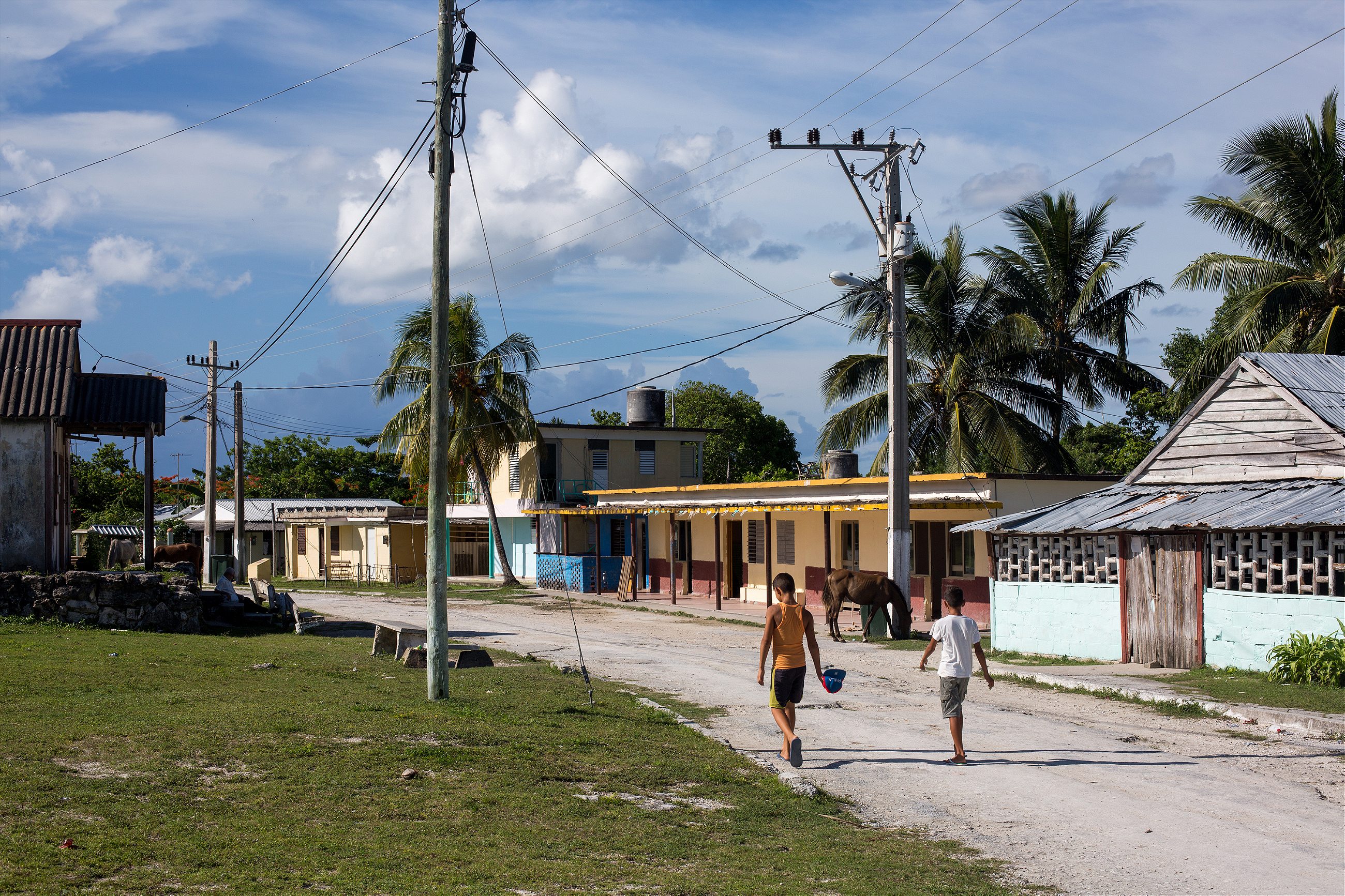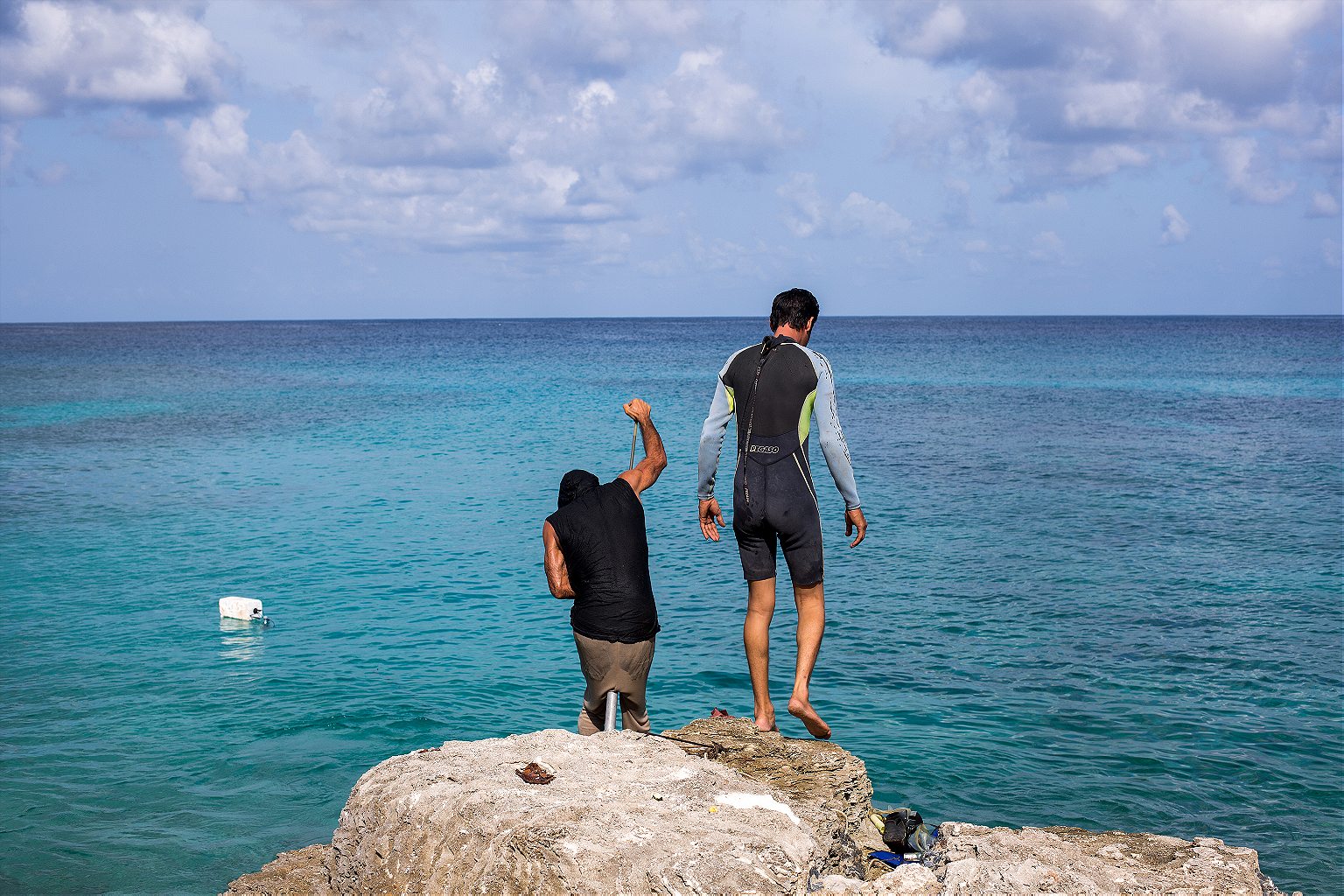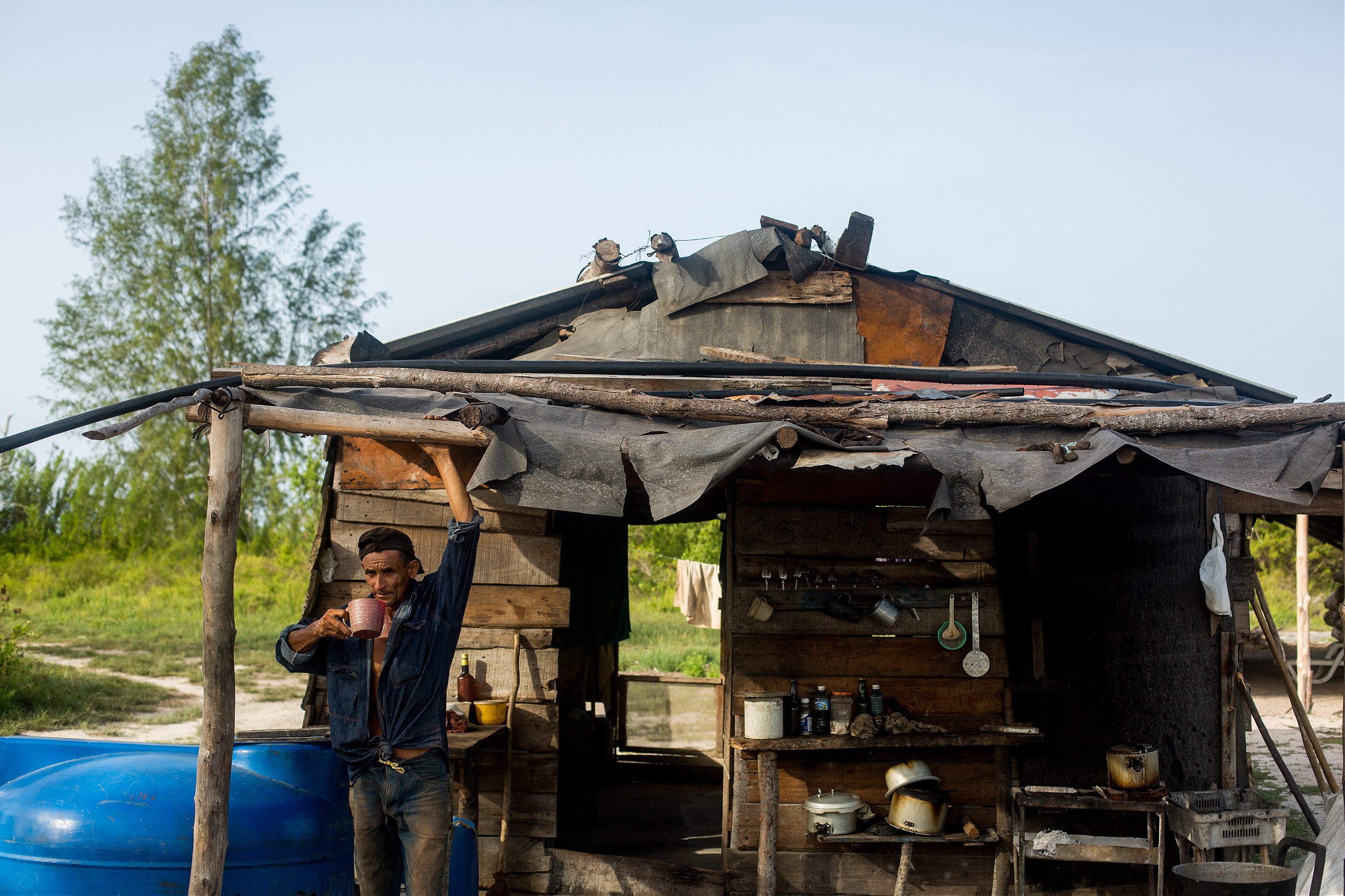A dispatch from the Isla de la Juventud, one of the few places left in Cuba with no foreign tourism.
The mosquitos haven’t woken up yet and the sun hasn’t quite risen on Cuba’s Isla de la Juventud. It’s 6 am and I’m on a horse-drawn cart with Rolando, leaving the town of Cocodrilo via an unpaved road. As the night sky gradually brightens, I make out the shadowed skyline of the thick jungle on each side of the road. Rolando’s headlamp cuts through the dark and flickers on the back of his horse. Over the steady din of the forest insects, I listen to the occasional tongue clicks and varying intonations of caballo that Rolando uses to communicate with his horse. There is no one else around.
I have been in Cocodrilo for five days. Rolando is my host’s neighbor and for 10 CUC (about $10), he gives me rides in his horse cart to just about anywhere on the coast, and even throws in a roadside snack of fresh coconuts or mangoes on the return trip. This morning, after a two-hour journey east, we arrive at the remote lighthouse of Carapachibey. One of the largest in Latin America, it towers over a scenic bay that offers views all the way to the other end of the island. Below, a lone lighthouse keeper mops the deck. He has set up a bed on the open-air base of the tower. On his mattress is a Spanish edition of The Evolution of Physics by Albert Einstein and Leopold Infeld. It doesn’t get more isolated than this.

Ever since I was kid, I have had a habit of studying maps and trying to find geographically unique places––remote islands, towns far removed from any others, the very ends of peninsulas. This interest in isolation, geographic and otherwise, is what got me interested in going to Cuba. And when looking at a map with this in mind, you will likely notice Isla de la Juventud, a smaller island southwest of Havana. Look closer and you will see a dot in what is otherwise green emptiness on the southern half of the island. This dot is Cocodrilo.
I had been to Isla de la Juventud twice before. The first time was just for a couple of days, to see a baseball game in the small capital of Nueva Gerona, a town of about 60,000 people. On that trip, I noticed how different the island feels compared to the rest of Cuba. There are few antique cars, and the architecture is dominated by Soviet looking concrete apartment blocks. It’s almost completely devoid of the things people tend to romanticize about the country, lacks attractive and accessible beaches, and thus sees very little foreign tourism. It was during my second visit that I started talking to local friends about Cocodrilo. Their views on the place ranged from “there’s nothing there” to “it’s a mystical paradise,” and I knew had to come back again.

The first thing you learn about Isla de la Juventud is that it can be very difficult to get to and from. There are two options from Havana: a bus to a boat, or a plane. The former requires getting tickets at a specific kiosk in the Omnibus station of Havana, which is open only for a couple hours each day. The bus leaves whenever it is ready and goes south to Batabano to catch the ferry. Occasionally, fast boats don’t run, and the two-hour journey turns into five. The plane is cheaper and quicker, but frequently delayed or cancelled.
The Cuban government makes it very easy to travel to tourist sites like Viñales, Varadero, and Trinidad. Cocodrilo is definitely not one of those places, at least not yet. Because the southern part of the island is a military zone, all travel to the area is restricted, with a military checkpoint set up at Cayo Piedra. The first and most publicized way to get through is to go to the government-run Ecotur office in Nueva Gerona and purchase a guided day trip to the south. Otherwise, you can be invited by a host in Cocodrilo who arranges the appropriate paperwork with the Cuban immigration office. I went with the latter, passed the checkpoint and packed into a hot, overcrowded bus that rattled through the jungle over unpaved roads for nearly four hours.

Cocodrilo is a quiet collection of houses spread out along the one road that runs along the coastline. It was founded by settlers from the Cayman Islands under the name Jacksonville, a name some locals still use, pronouncing it “Yak-sun-VEEL.” There is little left from that time, apart from the unique style of wooden houses and the three remaining Caimaneros: Mama Jennie, Winston, and Juanito. The three tell me how their ancestors left the Caymans when there was no work in the early 20th century, and how everything changed with the Communist Revolution. But while it did bring a road and some basic industry, Cocodrilo can feel at times like the Revolution still hasn’t quite found it. There is no cell-phone service, no internet access, and while people do get television, 24-hour electricity is a fairly recent development.
The main source of life remains the natural environment around Cocodrilo. People go spearfishing, gather fresh fruit from the forest, catch the area’s seemingly infinite crabs, and even go hunting for deer and fishing for lobster––activities that are banned elsewhere in Cuba. Because of its place in a protected environment, Cocodrilo is given special privileges: people there can live fully off the land, so long as none of their harvest leaves the community. “If you live in the community, you can live off of the community,” explains Nene, my host there.


With Rolando, I visit the small temporary settlements outside the village to see what people do for work here. Near the lighthouse, he leads me to a camp for workers making charcoal run by a friend of his. To be a carbonero is among the most brutal jobs in Cuba, but charcoal is one of the few small industries in this part of the island. At this camp, the five workers live out in the wilderness, in a makeshift wooden shack open to the heat and mosquitos. They spend hours in the hot sun doing the backbreaking work of harvesting lumber, piling it up to make a bonfire, burning it, then harvesting the remaining charcoal to ship all over the world.
The internet says that Cocodrilo is home to about 300 people, though it feels like less. Everyone knows everyone else here. Shirts and shoes are extremely optional, and to wear both at the same time is to identify yourself as an outsider. Walking from one end to the other takes about ten minutes, but it’s hard to do it quickly as everyone greets those passing by and will often offer a chair and a bit of rum. There are no restaurants or bars, just a simple cafeteria that sells beer, soda, rum, bags of the puffed corn chips known as Pelly, and very basic egg sandwiches. There is also a supply store where you can find anything from bicycle forks to mattresses depending on the day, and a pharmacy that looks like someone’s house next to an ambulance. Most nights here are quiet, but there are occasional parties at the thatched roof dance hall, with Rihanna and reggaeton blasting until the traveling DJs leave on the morning bus back to Gerona.

Cocodrilo is one of the few places left in Cuba with no foreign tourism. I spent a total of 15 days there and didn’t see a single other foreigner, a fact confirmed by my host, who told me I was only the second foreign tourist to ever stay with him. There are several houses that rent rooms in Cocodrilo, mostly to Cuban weekenders, and a couple of others are currently under construction, but the town remains outside the reach of Cuba’s tourism boom.
West from Cocodrilo, we travel to Punta Frances, a national park at the very tip of the island, and meet the two keepers of the flora and fauna. For their 15-day shifts, they live in a wooden hut with a pig. Further down the road, an impossibly perfect, white-sand beach stretches the long arc of the point, flanked by the forest and gentle turquoise waters. It’s the ideal Caribbean tourist destination, yet the park attendants are the only people there. One of them motions out to what looks like the remnants of a dock. He says it’s an active construction project: the government is building a restaurant out on the water, which should be ready for this fall. They are expecting 3,000 tourists. The number seems ambitious, but it’s hard to imagine this place will stay empty forever.